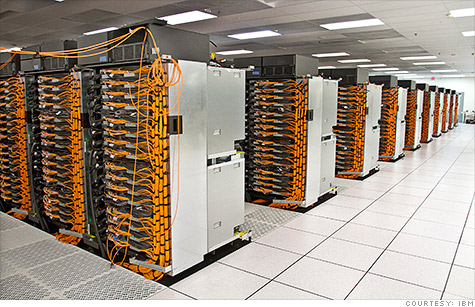History of Computers - CDC 6600
 Page created by Dara Ladjevardian
Page created by Dara Ladjevardian
Introduction
The CDC 6600 from the Control Data Corporation was the first successful supercomputer, developed in 1964 to be sent off to the Lawrence Radiation Laboratory. It performed at 1 MFlop with a speed of 10 MHz, remaining the world’s fastest computer from 1964 to 1969 until its successor took its place (CDC 7600). [1]
Overview
In 1962, Seymour Cray, the overall mastermind behind the CDC products, opened a Control Data Corporation (CDC) laboratory near Chippewa Falls, Wisconsin. Here, he led the design of the CDC 6600, which was announced in 1964. The CDC 6600 was eventually sold for around seven million dollars. The primary usage of the CDC 6600 was to analyze high-energy nuclear events. It was the first to use the Freon Refrigerant Cooling system to protect the computer from an over exhaustion of heat; it was also the first commercialized computer to use a CRT console. Cray had the CPUs for the CDC 6600 handle arithmetic and logic only, resulting in a smaller CPU with a faster clock speed of 100 nanoseconds. The simple processor allowed the CPU to perform a multiplication within 10 cycles. Cray implemented “housekeeping” tasks and instructions, such as memory access, in separate processors dedicated solely to each task; this later came to be called Reduced Instruction Set Computer or RISC. [2] Cray also utilized peripheral processors (PPs) and I/O, which displayed data into the main memory at high speed, improving the design and the performance of the machine. The machine functioned in a fashion known as barrel and slot, the "slot" representing the main CPU and the "barrel" representing ten PPs that were made to function as simple as possible for the CDC 6600. The Central Processor of the CDC 6600 had a 65,000 60-bit words of memory, with eight general purpose 60-bit registers, eight 18-bit address registers, and eight 18-bit scratchpad registers. Instead of having an individual input/output system, the CDC 6600 had the PPs take charge of input/output actions. Input for the supercomputer was initiated through punch cards or seven-channel digital magnetic tape, while output was received from two line printers, a punch card, a photographic plotter, and some standard magnetic tape. [3] The CDC 6600 was decommissioned in 1977.
Supercomputers
The CDC 6600 was the beginning of an era of supercomputer inventions. In general, supercomputers all functioned similarly, but some had differing purposes than others. One advantage of super computers was that they contained multiple nodes of CPUs and GPUs. Also, the implemented water-cooling system in supercomputers allowed for faster and more reliable results. From the beginning, supercomputers were made to model simulations and perform brute force calculations that could take years to solve for a regular human being. Supercomputers provided research tools to study aerodynamics, nuclear physics, the cracking of decryption, weather forecasting, and molecular dynamics modeling.[4] With all of these innovative fields being explored, supercomputers gave new understandings to both the chemical and physical world.

Significance
The CDC 6600, the first successful supercomputer, instilled a spark in history that would grow into a flame. The CDC 6600 established the beginning of the RISC instruction system and the Freon Refrigerant Cooling system, both adding beneficiary components to the modern day computer. Computers were first invented to perform mathematical calculations to simplify human daily life. Since the first computer, society has grown and advanced immensely; thus, computers must adapt and advance with it. Supercomputers are the next generation of computer technology. Modern day civilizations are becoming more and more complex. Twenty years ago, close to half of the applications we know in the present day were non-existant. Supercomputers are not only beneficial to society, but they will soon be needed in order to operate in certain fields. Supercomputers help decipher information that mere humans could never dream to understand. There are numerous undiscovered possibilities of supercomputers; soon enough in the future, super computers might be the basis for human lifestyle, for it advances at a rapid rate. The CDC 6600 provided a stepping stone for the future of supercomputer technology.

References
Links
http://www.bitsavers.org/pdf/cdc/cyber/cyber_70/thornton_6600_paper.pdf
http://www.extremetech.com/extreme/122159-what-can-you-do-with-a-supercomputer
http://www.theregister.co.uk/2007/12/03/tob_cdc_6600/
http://mysite.verizon.net/vzesz4a6/current/id70.html
http://wownesia.com/2011/05/titan-the-worlds-fastest-computer/